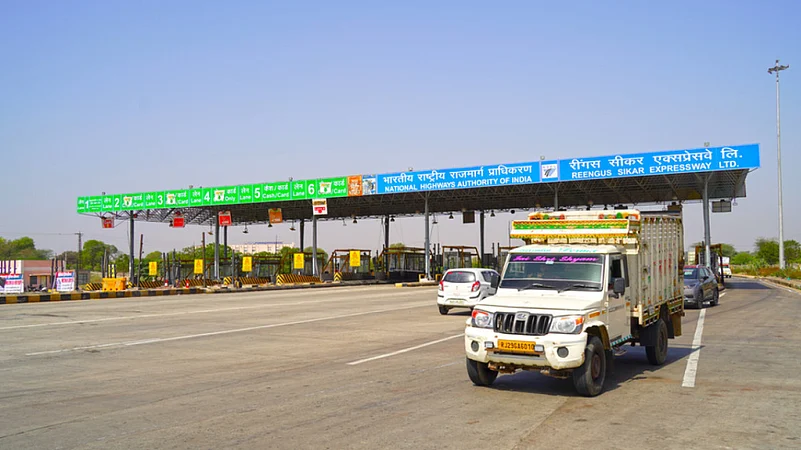Countries have built transportation infrastructure to prosperity for several decades. India, too, has been following the same path for the last two decades, building roads and highways at an unprecedented pace. The government followed suit in the recent budget. Finance minister Nirmala Sitharaman highlighted the focus on infrastructure spending to boost growth in the next financial year.
She announced an aggregate capex of Rs 12.2 lakh crore for the next fiscal, which is up 17 per cent over last fiscal year’s revised estimates. At the same time, the gross budgetary support has been increased by 39 per cent for the next fiscal year, bringing the government’s direct contribution to 62 per cent of aggregate capex in the country.
Advertisement
However, the slack rate of growth over the last few years along with muted household consumption is beginning to raise doubts over this strategy. A large part of the government’s capital expenditure goes into building roads and highways. The budget increased the allocation for the National Highways Authority of India by 136 per cent from Rs 57,350 crore to Rs 1,34,015 crore. However, data suggests that this recipe has done little to improve demand in the economy for the last few years. Between April 2014 and November 2021, the total length of national highways in the country increased by 54 per cent from about 91,287 kilometres in 2014 to 1,40,937 kilometres in November 2021.
Advertisement
However, the next immediate economic activity that should have flourished on this data has stagnated. The total vehicle production in 2021 till December is estimated at 2,40,67,787 units, which is not even one per cent growth from the corresponding number in 2015-16 at 2,40,16,599 units. Two-wheeler sales data (a barometer for income in the lower-middle-class families in India in rural and urban areas) for April-December 2021 at just 10 million units shows that this demand is at a decadal low in the country. If the government’s expenditure on roads, highways and other infrastructure projects were leading to income growth of the masses, it would have reflected on the automobile sales in the country, especially in the two-wheeler category.
Sanjeev Sanyal, principal advisor in the Ministry of Finance, however, defends the government’s strategy to push capital expenditure on infrastructure development in order to push growth in the country. He says that “during uncertain times, that is what governments are supposed to do.” Sanyal considers the Western growth model to defend his point. He says, “A lot of great infrastructure in the West was also built under these kinds of things. The rebuilding of infrastructure in Europe after World War II was about government capex. That was true of Japan and many other places. Government capex building the infrastructure as a way of growth is nothing new.”
Advertisement
He further adds that generating demand is one aspect of infra push, but “simply creating infrastructure is a good thing in its own right. Why are rich parts of the world richer? Or, even inside the country, why are some parts of the country richer than others? Simply because the richer people have access to better infrastructure. That is all the reason. If your electricity supply is not stable, and you do not have decent highways, you have no way of going in and out of airports. Your quality of life and productivity are going to be lower”.
But what happens to the immediate need to push income support for people? The low level of consumption in the economy needs immediate remedy. The government has pegged private final consumption expenditure (PFCE)—the expenditure incurred on final consumption of goods and services by the resident households and non-profit institutions serving households—for 2021-22 at Rs 80.81 lakh crore, down from 2019-20 level of Rs 83.22 lakh crore.
Advertisement
Sanyal believes that poorer parts in the country will also benefit from infrastructure remedy. “Simply putting good infrastructure, particularly in parts of eastern Uttar Pradesh, north-east Bihar and so on in itself will radically improve the quality of life and investment opportunities. You can certainly now set up a factory in places you could not before. Consequently, that in itself is crowding in, not just in the narrow sense that I do some investing so that I increase the demand for certain products and therefore somebody begins to invest and produce. That is the first round. The real kicker from investment is that I create a better city or better highways and it creates the multiplier effects of doing all kinds of things. That is the real crux of it.”
Advertisement
Sanyal’s optimism notwithstanding, the real evidence of the efficacy of his thesis will lie in the growth when it takes place alongside an increase in the number of jobs in the economy.















 Just one email a week
Just one email a week